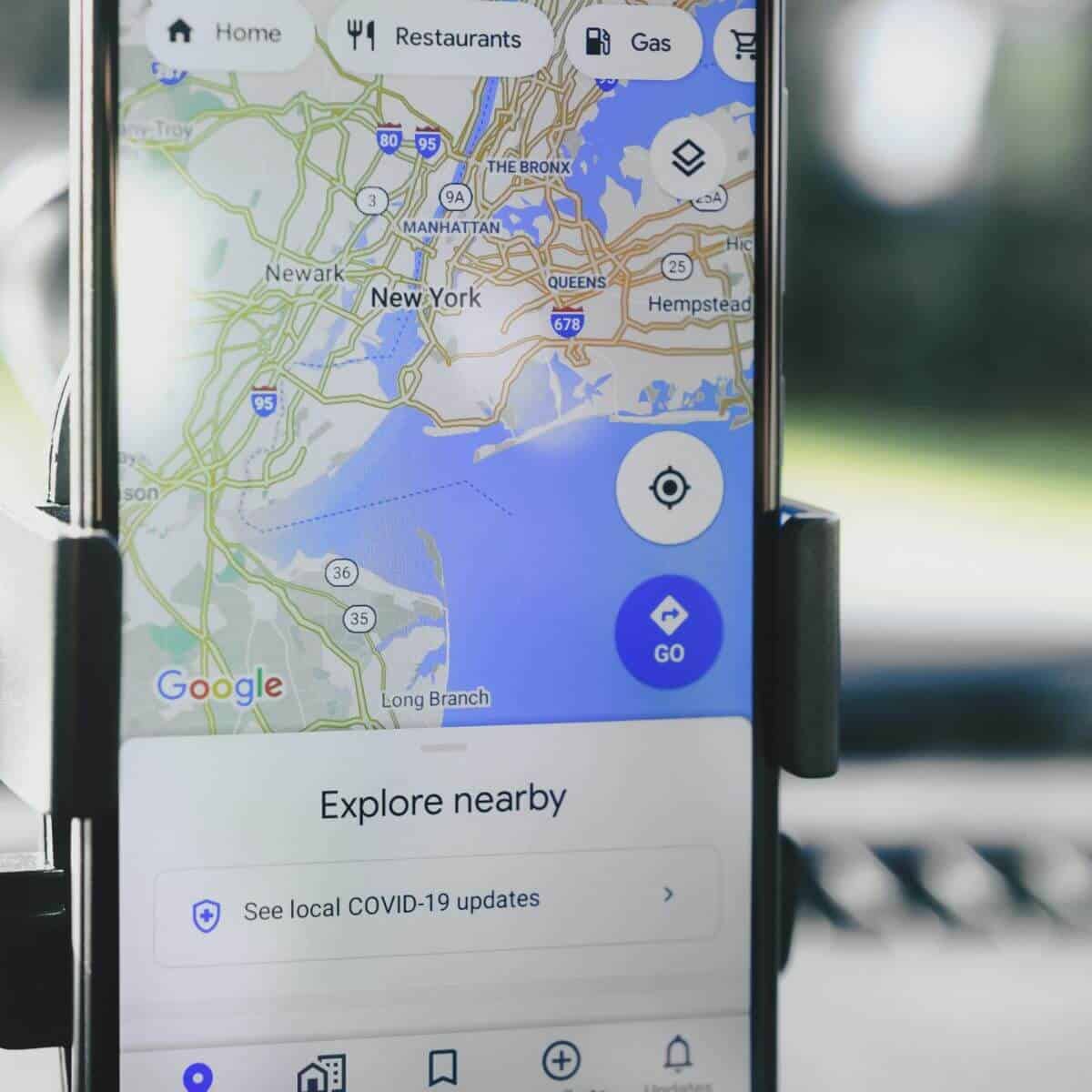Companies worldwide have had to master the art of Route Optimization to ensure that they deliver goods in the most timely and efficient methods.
When performing route optimization, we take into account all involved factors to estimate the most effective and fastest routes for deliveries.
In the Ultimate Guide to Route Optimization, we will look at the benefits of planning routes and using optimizing tools to make these routes more efficient. Similarly, it is vital to employ the most efficient strategies to optimize delivery routes and plan ahead, to reduce extra costs and delays and improve customer satisfaction.
Understanding Route Optimization
Route optimization is a process whereby you find the most efficient and cost-effective routes for delivery vehicles to pursue on their routes. It mainly involves factors such as distance, time constraints, traffic conditions and priority deliveries to determine the most efficient route optimal routes.
Route optimization usually has a significant impact on overall logistics operations. By finding the most optimal routes, companies reduce travel time, fuel consumption and operational costs while operating more efficiently.
In turn, this improves resource utilization, operational efficiency, and mostly customer satisfaction.
Challenges Concerning Route Optimization
There are however a few challenges concerning route Optimization:
- Inefficient Routes.
- Longer Delivery Times.
- Increased Fuel Expenses.
- Lower Customer Satisfaction.
This is why it is vital to understand and implement effective route optimization strategies to enhance logistics operations and stay ahead of the game in today’s fast-paced business environment.
Benefits of Route Optimization
There are several benefits to Route Optimization, which are touched on. However, it is also important to understand how these benefits work:
Saving Costs
Optimized routes help you save costs on fuel expenses, labour, and vehicle maintenance. This is because routes are more efficient and generally shorter, with less congestion or detours needed.
Travelling fewer miles results in less wear and tear on your vehicle and reduces fuel consumption. Similarly, by less time driving and optimizing your routes to schedule deliveries in the same area in one trip, less labor is also required.
This route optimization typically reduces miles travelled and hours that drivers need to work, which enhances cost savings.
Improving Travel Time
Efficiently planning routes reduces travel time. Efficiently planning routes ensures that all deliveries are made within a certain time limit. Similarly, drivers are utilized to their full potential. Knowing the allocation of vehicles and drivers as well as resources at all times optimizes operations to increase efficiency. Thus, more efficient routes result in shorter travel distances, and better management of routes and drives, which reduces delivery times.
Increased Productivity
As a delivery company, properly planning routes allows you to complete more deliveries within a shorter time. Overall, they boost the efficiency of the entire delivery fleet. Route optimization allows you to maximize the utilization of vehicles and drivers by optimizing routes. Thus there you enhance productivity, because you serve more customers in less time. In this way, businesses easily increase their overall productivity.
Optimized Customer Satisfaction
More timely deliveries ultimately lead to more satisfied customers. When businesses keep customers informed with tracking software and provide more accurate delivery times, they enhance the customer experience significantly. Accurate delivery times with minimal delays ensure that your business has higher customer satisfaction. In the end, a satisfied customer becomes a loyal customer who will make use of your services in the future.
Sustainable Practices
There are a few methods by which logistics companies can contribute to the environment. One of them is a result or benefit of route optimization. By optimizing routes, logistics companies can reduce delivery distances and minimize the time vehicles spend on the roads, thereby emitting fewer fumes and reducing their carbon footprint. Simultaneously, this is more fuel efficient. Thus, optimized routes result in reduced fuel use, which in turn reduces carbon emissions.
Continuous Improvement
By using real-time traffic information using route optimization tools, software delivery drives can make real-time adjustments based on traffic conditions or new delivery requests. Thus ensuring continuous optimization.
The technology assists businesses in their logistics to manage delivery schedules and resources much more effectively. In turn, continuous improvement gives a competitive advantage in the market by improving operational efficiency and customer services.
Improved Flexibility
More Dynamic routing gives a delivery driver the capability to re-route deliveries on the go. It allows you to quickly and easily respond to changing conditions such as peak traffic jams and weather. Thus, the driver has additional flexibility. Route optimization systems allow you to adapt quickly and easily to changes in delivery priorities.
Enhanced Driver Safety
Drivers face many dangers, such as hazardous roads, congested traffic areas and unsafe areas. Thus, by optimizing routes, you choose safer and more efficient roads for the drivers. This means that driver safety is generally enhanced.
All these benefits highlight how important route optimization is for businesses, especially those in the delivery and logistics industry.
Software and Tools for Route Optimization
There are various software tools available that businesses can use multi-stop routes to their advantage. These software tools are essential to fully optimize logistics and route planning. Software tools use advanced algorithms and optimization techniques that analyze all given data to estimate the most optimal routes.
Transportation systems face increasing challenges with the growth of the global population and urbanization. Challenges such as traffic congestion, delays and logistics inefficiencies are becoming more troublesome. Effective planning of routes is crucial, and software can readily aid in automating the planning process.
Route planning using effective software helps to find the most efficient routes for your vehicles or large fleets together. Thus, in terms of route optimization, route planning is a fundamental aspect of delivery operations. When you utilize route planning software, such as mapping tools, it has a direct effect on route optimization and its benefits.
Route planning using optimal software goes hand in hand with optimizing routes, not just to get the best routes, but also to estimate arrival times more accurately.
A few examples of Route Optimization Software Technologies are:
- Routing Software – Routing Maps or software uses an application that takes into consideration distance, time constraints and traffic conditions to find the most optimal routes.
- GPS – A GPS system provides real-time navigation for drivers and helps them follow optimal routes.
- Fleet Management Software – The software manages and monitors a fleet of vehicles, tracking their locations, analyzing routes, and monitoring performance data.
- Mobile Apps – There are a few mobile apps that receive route instructions and allow communication with dispatchers. This helps to provide real-time updates on the delivery status.
What is Route Planning for Routing Optimization?
As mentioned, route planning is a critical step in your delivery routing and optimization. Planning routes means that you analyze factors such as delivery destinations, driver availability, mileage, time constraints, traffic and weather conditions, all to determine the most efficient and cost-effective routes.
What Does a Route Planning Process Involve
In a nutshell, route planning involves choosing the quickest and most practical mode of transport between a pickup and destination site.
There are, however, a few steps that make the process easy to follow:
Acquiring Data
Firstly, you need to require information to identify the best prospective routes:
- The delivery address is the customer’s location for delivery; the pickup address is the start point.
- Any information that could affect the route, such as traffic congestion, closed roads, speed limits, tolls, and other restrictions or preferences.
- You must determine the most efficient means of transport. In some cases, a bicycle or scooter is easier, while in other circumstances, a van or vehicle is required. Driver availability is also a factor.
Based on the outcome, there will be a list of prospective routes, and with the aid of software tools, you can identify the shortest and safest routes to point b a.
Analyzing Data
Once you have established all required data, the team must analyze the data in light of all variables. Software with advanced algorithms and optimization techniques will help to analyze data quickly to attain optimal routes. Do not forget to include details such as time constraints, delivery priorities and vehicle capacity.
Routing Optimization
Routing Optimization strategies and software used help to make the paths for transport even more precise. This entails:
- Taking into account traffic conditions with real-time updates.
- Avoiding crowded areas for travel.
- Taking shorter paths to reduce fuel usage.
- Giving priority to certain stops.
- Taking into account multiple locations, waypoints or intermediate stops along the way.
Navigating and Communicating Routes
Communication channels, such as navigation systems or mobile apps, are essential for communicating routes to drivers. After determining the best route, it is still vital to provide drivers with clear instructions and directions throughout their routes. GPS Software, navigational aids, maps, mobile communication or even handwritten instructions are essential to aid drivers throughout their journey.
Monitor and Adjust Routes
Consistent monitoring and often adjustment of routes is necessary. Real-time data, such as traffic updates or even changes in delivery priorities, makes adjustment vital. Thus, it is important to review and update routes periodically to maintain up-to-date information that could influence the voyage.
Route Planning Maps and Google Maps
One of the critical factors when planning routes is to have the correct directions to and from a destination. This is a route planning map that comes into play. Luckily, with technology, we are no longer bound to books or paper maps.
There are easy online mapping solutions such as planning a route on Google Maps that give you clear driving directions, from the starting point to your destination, with a few options of suitable routes.
A Few Tips on What to Look for in a Good Route Planner
Route planning forms a fundamental part of route optimization, they almost go hand in hand. As mentioned, planning a route on Google Maps is a good option, however, there are other technologies available for a route-planning map.
Any good route planning map should have the following capabilities:
- Routing Multiple Stops.
- Optimization Capabilities.
- Scalability.
- Live Traffic Reports.
- Customizable Route Preferences.
- Integration.
- Analytic Reports.
- User-Friendly Application.
- Customer Support and Training.
To conclude:
As we can see, route planning and route optimization are essential in any delivery business to ensure efficiency and reduce costs. With the many benefits, route optimization helps distributors and delivery businesses plan their routes effectively to provide the best customer service and enhance overall productivity. All the benefits of Route optimization essentially add to the success of your business operations and logistics.
Are There Alternatives to Google Maps Route Planner?
If planning a route on Google Maps is not exactly what you are looking for, there are a few online companies that provide more targeted routing solutions.
What is the Difference Between Route Planning and Route Optimization?
Both route planning and route optimization have the same goal, to make travelling easier. Though they have different approaches. While route planning involves arranging stops and creating a route, route optimization does the same in such a manner to improve fuel efficiency, and save time.



